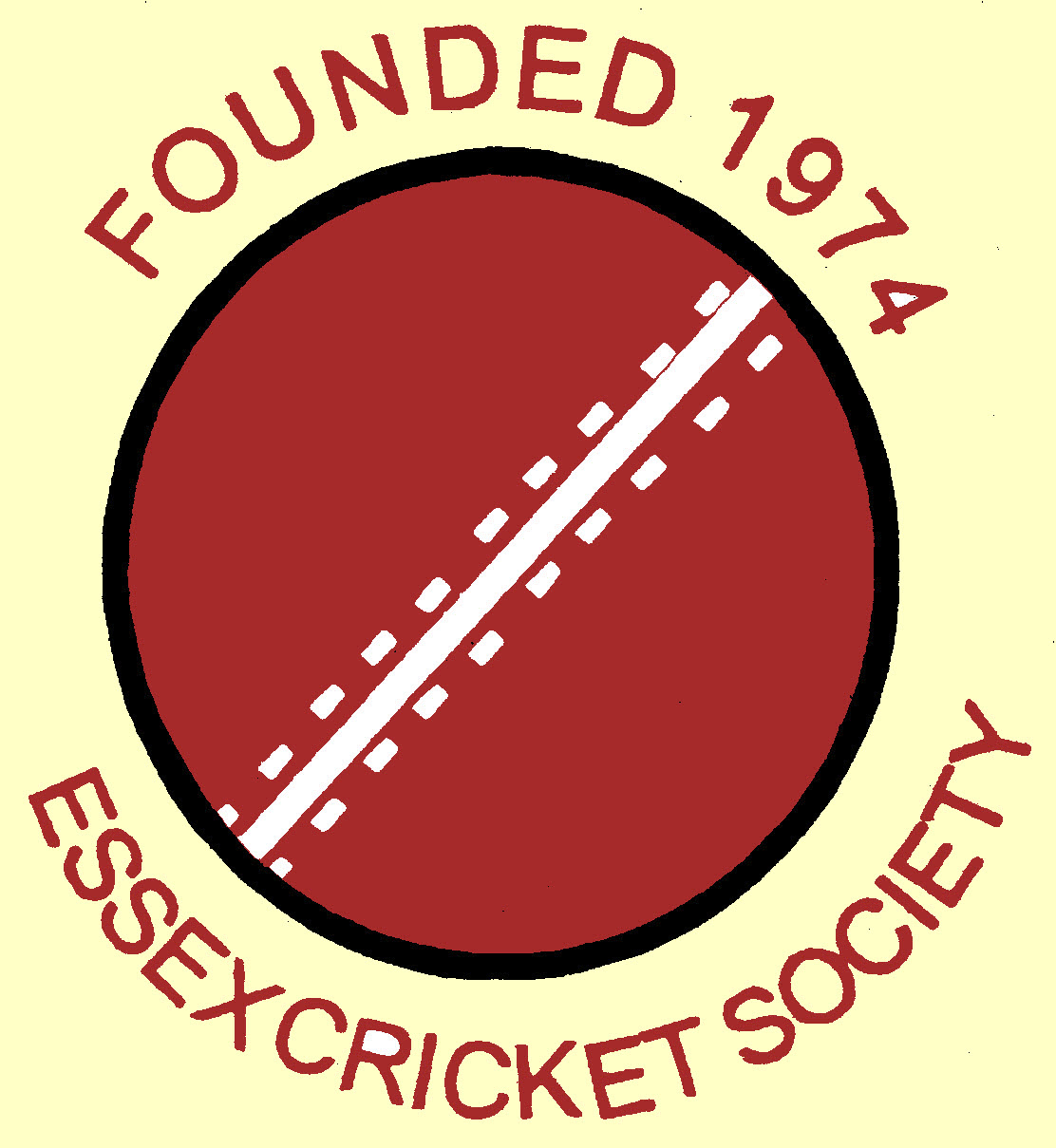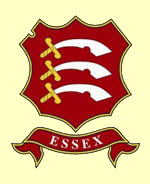Tales from the Boundary
Cricket in Chelmsford since 1945
Although Essex took over the New Writtle Street cricket ground in 1946 the state of the wicket was a cause for concern, as was the low crowds. In 1952 only a narrow vote reprieved matches at the county town after the festival week lost money. Three thousand people paid £377 over the 6 days compared with the 29,243 who had paid £3,005 in a record week that had just ended at Ilford. After a great effort to increase the crowds, 25,000 people attended the next cricket week but attendances soon went back to being low and in 1957 there was no cricket week in the town. The Weekly News commented that this was “one more indication that the people of the town are not sports minded”. County cricket did not return to Chelmsford for ten years.
In 1964 the club moved its headquarters back to the town. The intention was to buy the ground from the Wenley Trust. This would enable the club to build a new pavilion and use the surrounding land to lay out a car park and eventually an indoor cricket hall. The actual buying of the ground only came about because another county, Warwickshire lent the club £15,000 on an interest free loan. A new pavilion was built in 1970 and 1971 saw a record seven and a half thousand crowd at the County Ground. The team led by Brian ‘Tonka’ Taylor started doing well in one day cricket, finishing 3rd in 1969, 4th in 1970 and 3rd in 1971 in the John Player League. Finances were however still tight and local prisoners painted the pavilion and tended the pitch. In 1975 almost 25,000 crammed into the ground to watch the Australians for three days and Hampshire in the John Player League for one day.
After a number of near misses including a second place in the County Championship and a narrow loss in the Gillette Cup semi final, the county finally won its first trophy in its 103 year existence, the Benson and Hedges cup in 1979. In August of the same year Essex went on to win the county championship for the first time. After three second places Essex finally won the John Player League in 1981. In 1985 the county won the 60 over Nat. West. Trophy at Lords. The following year the county won the County Championship for the second time. When Essex won its fifth county title in 1991, victory was secured at Chelmsford as was its sixth title in thirteen years the following year. In 1997 the club won the 60 over trophy again at Lords and won the Benson and Hedges trophy the following year.
Despite this unprecedented run of success, Essex was relegated to the second division of the County Championship in 1999, when it was split into two, because of their low finish the previous season. The last match of the following season saw them promoted back to the top tier. Each of the following two seasons again saw relegation followed immediately by promotion. 2005 saw Essex win the one day league with three matches to spare and three years later the County won the Friends Provident final at Lords. After relegation again, 2009 saw promotion for the county again after a dramatic late run in. Once again this was followed by immediate relegation. The club stayed in division two of the Championship until 2016 and four unsuccessful visits to twenty-twenty finals day in 2006, 2008, 2010 and 2013 were the county’s only flirtation with success until the side coached by Chris Silverwood were promoted back to division 1 of the County Championship. Although the club always lacked the financial muscle of some other counties, assiduous development of local talent such as Jamie Porter and Sam Cook, and a keen eye for outside expertise (e.g. the phenomenal Simon Harmer!) led the county to outstanding Division 1 titles in 2017 and 2019. The County completed an unlikely double by winning the twenty-twenty title. Three wins in the final 4 group games had seen the County sneak into the quarter finals. In the final Simon Harmer took the best ever bowling figures of 3 for 16 and then hit the winning run.
In 1996 the club took advantage of £100,000 grant to build an indoor cricket school for young cricketers. The land was bought from Chelmsford City Football Club.
In 1992 Graham Gooch, one of the cricketers most responsible for the county’s success, was honoured in the form of a sculpture placed the near the ground on New London Road. The £20,000 bronze figure by John Doubleday was commissioned by property developers. Gooch, of course, unveiled the work. Gooch was arguably the greatest of many outstanding Essex players during the club’s halcyon period. He captained both Essex and England in a playing career spanning from 1973 to 2000 during which he became the most prolific run scorer of all time, with over 67,000 runs in all forms of the game. In 1980 he was named the Wisden cricketer of the year. His career underwent an unusual detour when he went on the 1982 rebel tour of South Africa. This resulted in him and others such as Geoffrey Boycott, Alan Knott and Bob Woolmer being banned from Test cricket for three years. In the film ‘The Wilderness Years’ he said that ‘others’ had decided he had no place in English cricket so he decided to go on the tour. After returning to the Test team in 1985 a severe loss of form led him to being dropped. By 1990 however, he was successfully leading England as captain, his position strengthened by his habit of leading from the front, his batting average being twice that of his fellow teammates. In 2001 after his retirement as a player he became head coach at Essex. During 2009 he became England’s batting coach, a position which he took full time in 2012. He was one of the first sportsmen to promote hair transplants after his hair began receding in the mid 1990s.
Keith Fletcher played a vital role in the transformation of Essex into a major power in county cricket. He was nicknamed the ‘Gnome’ by teammate Ray East, because his winklepickers had begun to turn up at the toes because of wear. Fletcher, according to cricket writer Colin Bateman, was “a tough cookie, a shrewd man who could bluff opponents like the most disarming of poker players”. He was captain of the national team when the defection of several high profile players to the previously mentioned, unofficial tour of South Africa occurred. In the mid 1990s Fletcher was manager of England, a particularly unsuccessful period for the team. He returned to coach the Essex team until 2001.
Another famous recent Essex county cricketer was Nasser Hussain, who grew up in Ilford and went to Forest School, Walthamstow. He was selected for Essex’s Under 11 team as young as eight years old. At 12 he was the youngest to play for Essex’s Under 15 team. His bowling suffered after he grew ‘a foot’ in a winter. Nasser felt he had let his father down and for a while he slipped behind his playing contemporaries. His batting progressed however, although he never thought he was a natural. Hussain made his Test debut in 1990 and was England’s captain from 1999 to 2003. His career was by no means smooth, often responding defiantly to criticism. After he retired from cricket he immediately became a commentator for Sky Sports. Hussain, still lives locally with his family at Little Baddow, and in 2010 was coaching at New Hall School.
Peter Edwards died in 2000. Behind the scenes, as secretary and general manager he contributed greatly to Essex’s period of success. In 2008, during redecoration at the County Ground, a large cache of cricketing memorabilia collected by Edwards was discovered, including a bat signed by Bradman on his last Ashes tour and a signed photo of W.G. Grace.
In 2011 Trevor Bailey died. Known as ‘Barnacle’ Bailey because of his defensive batting qualities, Bailey was reckoned to be the leading all-rounder for most of his international career. Bailey played 61 Tests for England and captained the county from 1961 to 1966. In his later playing days he was also the club’s secretary. Bailey also played football to a high level, playing for Cambridge University, Clapton, Leytonstone and Walthamstow. He added to his income by advertising Brylcream, Shredded Wheat and Lucozade. He was a Test Match Special commentator for 25 years until 1999, during which time fellow commentator Brian Johnston nicknamed him the ‘Boil’. Jonathan Agnew, also of Test Match Special, wrote of him “Dogged batsman. Aggressive bowler. Intelligent cricketer. Wonderfully concise pundit. Great sense of humour.”
Of course the most illustrious current Essex cricketer is the former England Test and O.D.I. captain Alastair Cook. Cook went to the independent, St Pauls Cathedral School and then boarded at the Bedford School. While still at school he played for Maldon cricket club in the summer holidays. He played for Essex’s Academy before making his debut for the first eleven in 2003. Cook marked his first Test match for England with a century. He went on to become the youngest English batsman to score 5,000 runs. Cook was appointed captain of the Test team in August 2012 after the retirement of Andrew Strauss. He plays piano and saxophone, contributing on the latter to Freefonix, a CBBC animated series.
2006 saw the first mention of the re-development of the County Ground. The first scheme proposed increasing seating by 2,000 and an improved cricket school. Initially 180 flats were to be built on the car park and existing cricket school to finance the rest of the scheme. The financial crisis has ensured that the development has failed to go ahead despite planning permission and environmental authorisation being obtained. Concern was expressed about the danger of flooding and the lack of suitability of the proposed tower blocks for the surroundings. The first tower block was completed but since then the scheme has stalled. It remains very unlikely that a development on the rather grandiose lines of the original will come to fruition but the current ground is beginning to look very ‘tired’, even to those who love it.
Chelmsford Cricket Club survived to reach its bicentenary in 2011. It moved to the council owned Chelmer Park in 1972. By 2012 the club had won 7 league titles in the previous 15 years.

